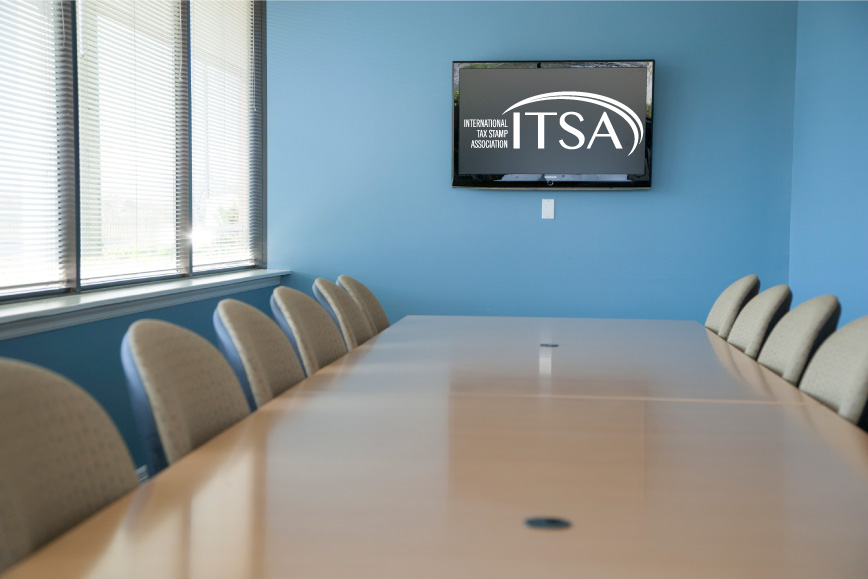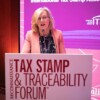
Interview with an ITSA Member – JURA
25 Apr 2024 | Interviews, Press Releases
In our second 2024 interview with members of the International Tax Stamp Association (ITSA), we speak to Barna Barabás, Co-Managing Director of JURA, a global brand name in security printing.
Barna’s responsibilities lie in research and development, marketing, and operations, while Co-Managing Director Kálmán Manhercz covers sales and the company’s newest branch: digital security printing.

Barna Barabás.
JURA began as a commercial printer in the 1980s, moving into security printing in 1993 and security features for personalised documents in 1997. The company is defined by its focus on a niche area: pre-press of secure documents such as banknotes, passports and tax stamps. It places particular emphasis on research and development, plus the hiring of subject experts, all with the goal of keeping ahead of counterfeiters.
Q: What role does your company play in the tax stamp industry?
A: We support countries in deploying digital tax stamp systems. It has always been difficult to produce tax stamps with traditional security printing technology, and we have used our specialised knowledge to assist companies with this, but today we see the industry evolving and new technologies being introduced, such as digital security printing.
Traditionally, tax stamps were printed identically, but with digital elements they’re still visually similar while actually having unique, personalised details that enable more granular tracking and tracing of products. This digital side is our primary focus.
Q: What do you think is the most interesting aspect of tax stamps?
A: They are such an important product, both in terms of revenue for authorities and safety for the general public. With modern tax stamps – combining traditional and digital printed elements – we can provide greater security and easier authentication, so their evolution is also both interesting and very beneficial.
Q: What changes have you seen to the tax stamp industry during your time working in it?
A: Tax stamp production is price-sensitive, with people seeking the highest security at the lowest cost, leading them to always seek new solutions. These need to be complex in terms of production – to deter counterfeiters – whilst also being cost-effective and easy to authenticate. All these factors together have driven innovation and the development of digital layers.
Q: What changes do you envisage happening within the industry in future?
A: Firstly, I’m not sure digital is 100% of the solution. The focus needs to be on authentication, and right now we have highly trained experts who can rapidly identify traditional printed elements of security printing.
Digital security printing is a new technology, and it offers advantages in terms of speed and ease of use, but only if people have the correct training. For the foreseeable future, traditional and digital elements will need to work in unison to provide the most usable and secure solution.
There have been decades of investment in traditional technologies, so it will take time to introduce digital more widely and this will naturally be a gradual process and needs to be guided by standards and cooperation within the industry.
Q: What is one change to tax stamps or the industry you would like to see?
A: I would like to see more countries introduce tax stamps, not just to increase our market – although of course that is a factor – but to give them greater control over the quality and movement of products such as alcohol and tobacco. I also look forward to seeing greater adoption of newer technologies, such as digital security printing.
Q: What do you see as the main challenges within the industry today?
A: Standards! We can see from other industries how important they are. If an authority wishes to issue a tender or explore tax stamps, they may not know where to begin or what to prioritise. Standards give them a set of tools to work with, and they can approach the industry with confidence that they and the various companies are effectively speaking the same language. Standards will also keep quality consistent and high.
The challenge is who develops them, and how. Issuing authorities and suppliers need to be involved in the process, and it must be very transparent. Not all companies will see advantages for themselves in standardisation, and they may not be supportive, but I believe it ultimately benefits everyone and will lead to the best results for end users.
Q: How do you see the synergy between physical and digital features contributing to the efficacy of tax stamp programmes?
A: In security printing, we always prefer to have a wide range of different features. The digital features are complementary to the offset/intaglio or traditional security features and without question elevate the protection level of the document. To forge the digital features, you would need a different know-how than to forge the offset/intaglio ones.
The digital features are personalised features, which means each of them are visually the same but the content – the hidden data – is different. This might be easier to copy, but each piece must be copied or generated one by one, and for authentication you need a special application or tool. This complexity is a definite advantage and increases the protection of the tax stamps.
Q: Why do you think the development of standards is important for the industry?
A: Beyond my thoughts on the challenges of standardisation, the protection of products has to be the most important thing, beyond even protecting the technology of tax stamps. A product with full track and traceability will help authorities effectively collect taxes and ensure consistent safety and quality.
I would say we now have a good framework to develop standards, with events such as the Tax Stamp & Traceability Forum™ bringing together all the relevant stakeholders, and this will be valuable in supporting the highest standards in both traditional and digital security printing going forward.







